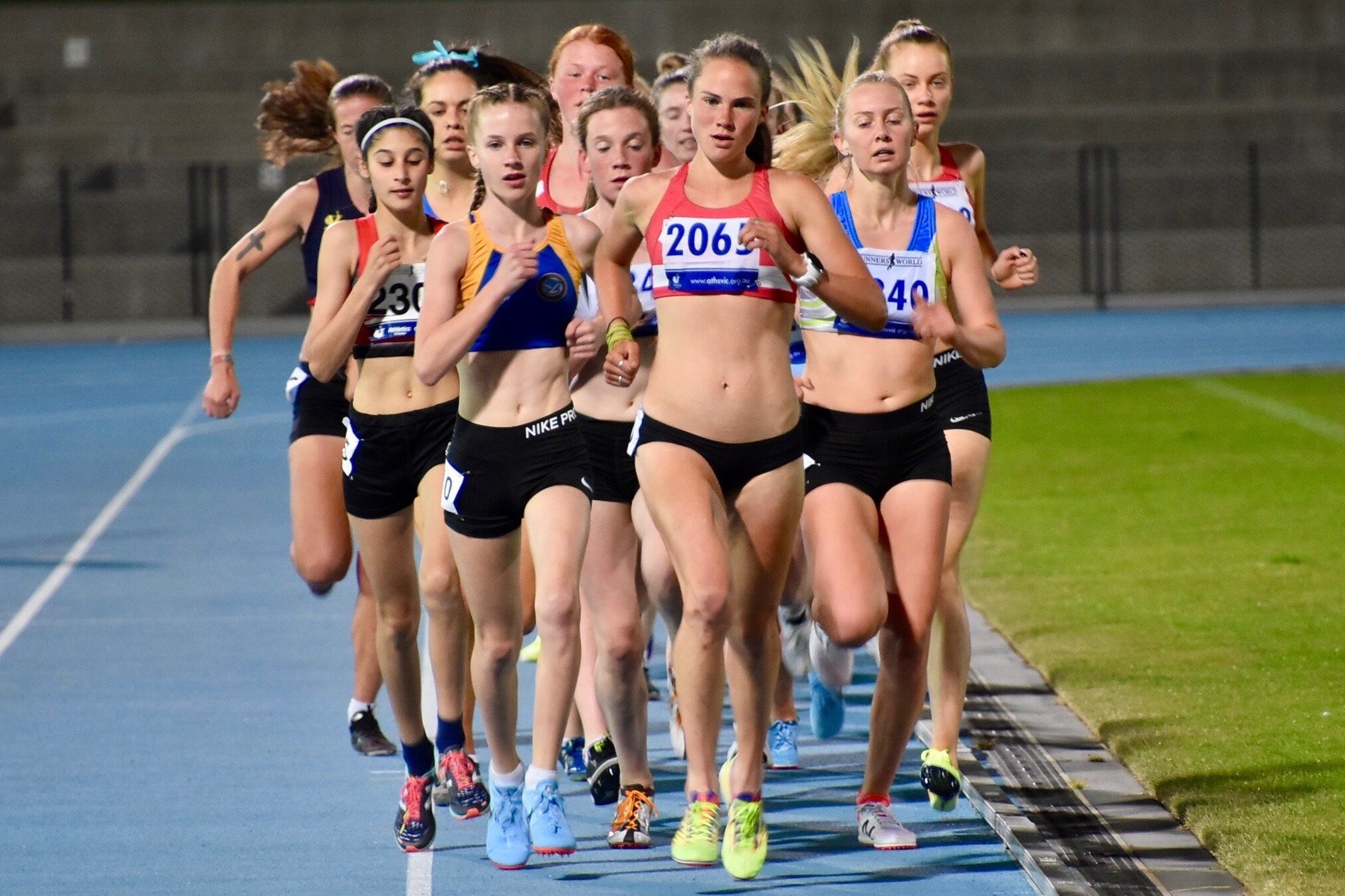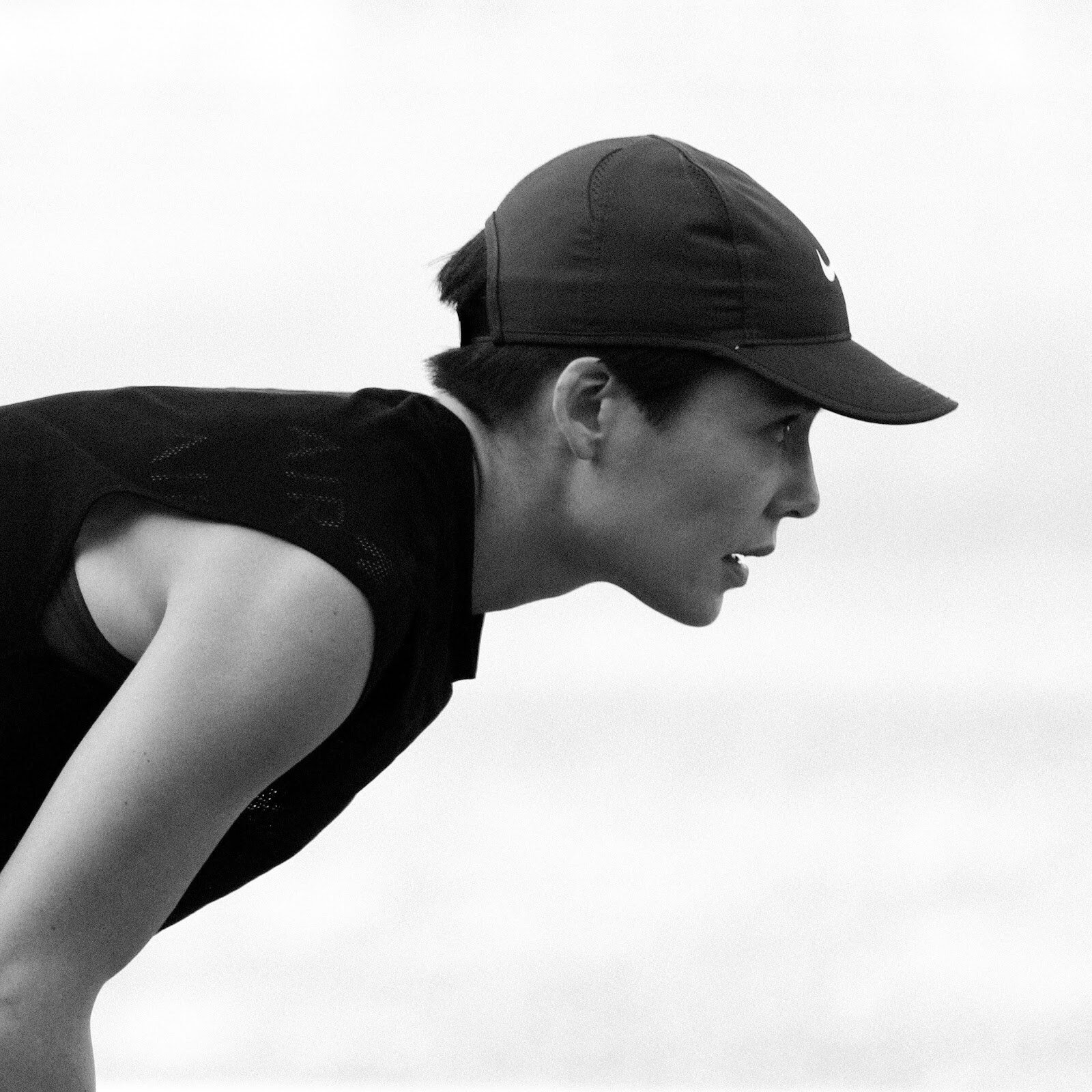Acceptance: The best way out is always through
By Catriona Bisset and Simone Brick, in conjunction with Revvies Energy.
I (Sim) stride onto the track to my starting position, bouncing with nervous energy. It’s my first 5000m state championship race, at Lakeside Stadium, a distance and surface I'm new to and far from comfortable on. I’ve only run one 5000m before, and there was no pressure that time. Now I’m fitter and faster — surely I can just sit in the pack and get pulled to a PB.
The gun fires. The first kilometre feels amazing: 3:30 exactly, in a pack of 5. Perfect.

Fast forward to 3km in the same position, and — it all hits. Fatigue, rising pain, like the ground is getting hotter with each stride. No! This wasn’t meant to happen. It’s not supposed to feel like this. An athlete passes me, then another. Soon, I’m running solo, wishing I was anywhere other than at the back of a field listening to well-meaning yet demoralising cheers of “don’t give up!”.
Three months later, I’m on the start line of another 5000m. Still not my comfort zone. But this time I brace myself. This is damn well going to hurt, I say to myself. It might get hard early or start to blow up. People will pass me, and I will pass others. It won’t be perfect, but no matter what happens, bring on the pain. I don’t care if it’s the hardest race I’ve ever run, I’ll get it done.
This time, when the pain and fatigue rises at 3km, I welcome it. It’s everything I prepared myself to accept this time, and I lean into it, repeating “pain is my power”. This time, I maintain my pace and go on to run a personal best.
Acceptance can be defined as “the willingness to tolerate a difficult situation”. Simone’s two races represent two different mindsets. In the first race, she was mentally unprepared. She began to resist the pain, reacted negatively and became distracted by her self-perceived humiliation. In the second, she accepted that things would get tough. When the pain arrived, she passed no judgement, and remained focused on the task at hand.
These different mindsets serve as analogies for how we can approach the current COVID-19 situation: resistance or acceptance. Everything is in a state of flux right now. The only constant is that of uncertainty. Faced with changes to everything, from training availability to our bodies, as we adapt to new conditions it’s natural to have denial, to push against the restrictions out of anger, fear and the desire to exert control by holding on to what we had. But this is wasted energy and can lead to burnout and frustration, as well as further stall progress.
Athletes are taught to “keep the ball rolling” — but when life changes and we no longer know what the ball is rolling towards, keeping it going without taking the time to reassess is to risk moving for months in a direction that won’t do anything other than lead us haphazardly down paths that end nowhere near what we wanted.
Accepting difficulties that face us involves not denying the emotions that accompany them; instead, sitting with discomfort and being willing to feel rather than act. In practising this, comparison is the enemy of acceptance, as is the common belief that “they have it worse, so I shouldn’t be (insert emotion here)”. This belittles our own experiences and does nothing to help either party in the comparison. Saying that you can’t be upset because someone else has it worse is like saying you can’t be happy if someone else has it better: it simply doesn’t work that way.
We each have our own journey and struggles, especially given the huge variety of ways that COVID-19 has affected different groups of people. By owning our own struggles and becoming willing to tolerate the discomfort of our situation, we open ourselves up to being more receptive of what others are dealing with, and respect our own experience in the process. Only once we achieve that can we be truly compassionate towards ourselves and others — and the need for compassion is rising everywhere. As competition after competition is postponed or cancelled, we athletes can be left feeling stranded, unmotivated and extremely anxious about the future.
One of the major therapeutic approaches to anxiety is Acceptance and Commitment Therapy (ACT). In our understanding of ACT, the aim is to accept pain and anxiety as feedback. By fully feeling and listening to this feedback, we can create more mental flexibility in the choices that follow it. The ACT model empowers individuals to become aware, accept, and then commit to a course of action that’s in line with their knowledge and values rather than instincts. This can be the difference between responding to our anxiety by acting out in areas that have no real effect on the situation, such as using food, alcohol or excessive training to search for calm; versus becoming aware of the source of our anxiety and taking actions that face the problem head on.
Sometimes, targeted therapy is essential. As a first step though, many of us can benefit from taking time to assess our emotions; to feel and accept all that is. This can begin to alleviate the cause of our struggles, rather than putting a temporary band-aid on the symptom while it festers. What if instead of reacting, we stopped for a few moments and assessed everything before us? Our resulting actions then have a chance to be based on fact, rather than emotion or ego, and we become more powerful in our ability to choose our direction.
Yes, as motivational pictures remind us daily, coping right now is partly about gratitude for what we have, facing daily challenges with positivity, and maintaining the things we truly need. But a foundational action and worthwhile first step, is to dedicate time to assess, acknowledge and accept where you are. This will allow you to tackle everything else genuinely, and put you on the path towards your goals.
Until next time,
Trina and Sim

For More About Catriona:
https://catrionabisset.com/
Instagram
For More Info about Revvies:
https://www.revviesenergy.com/
Buy Online or In Store at Chemist Warehouse
Still We Rise

